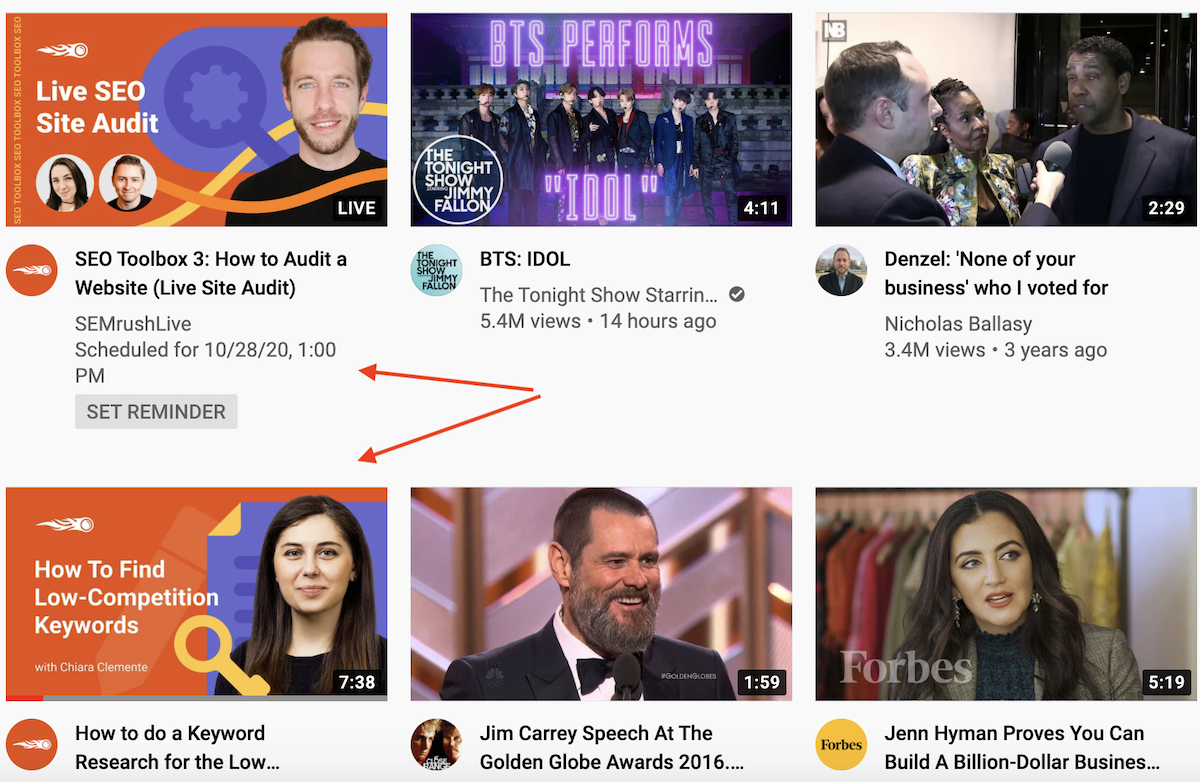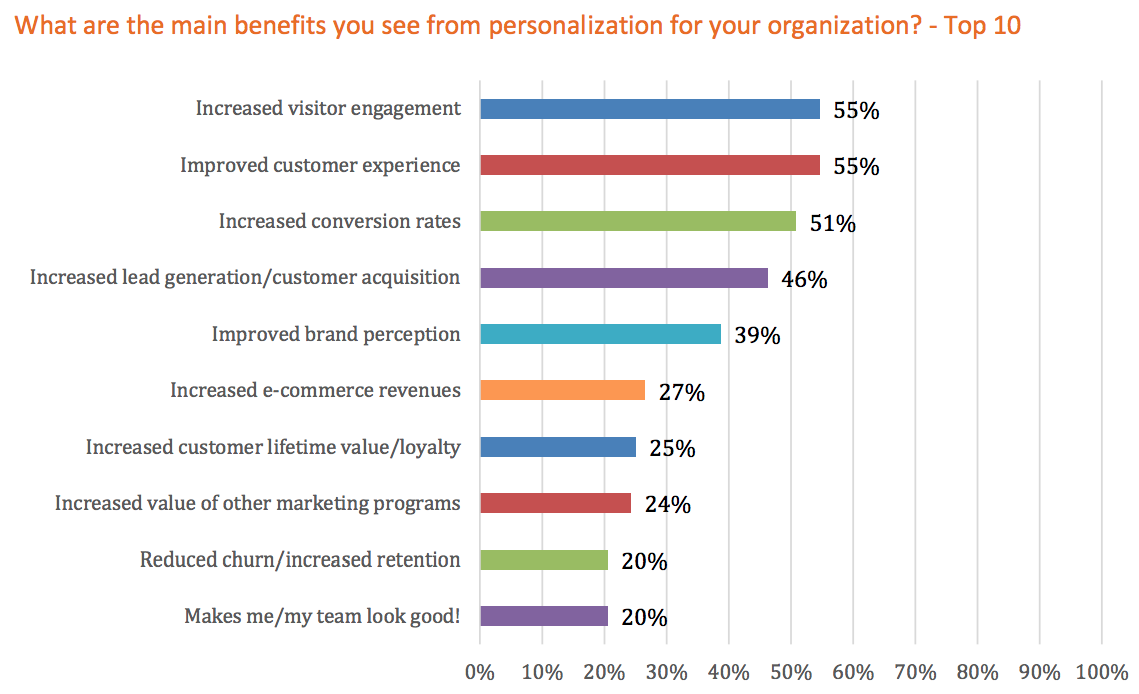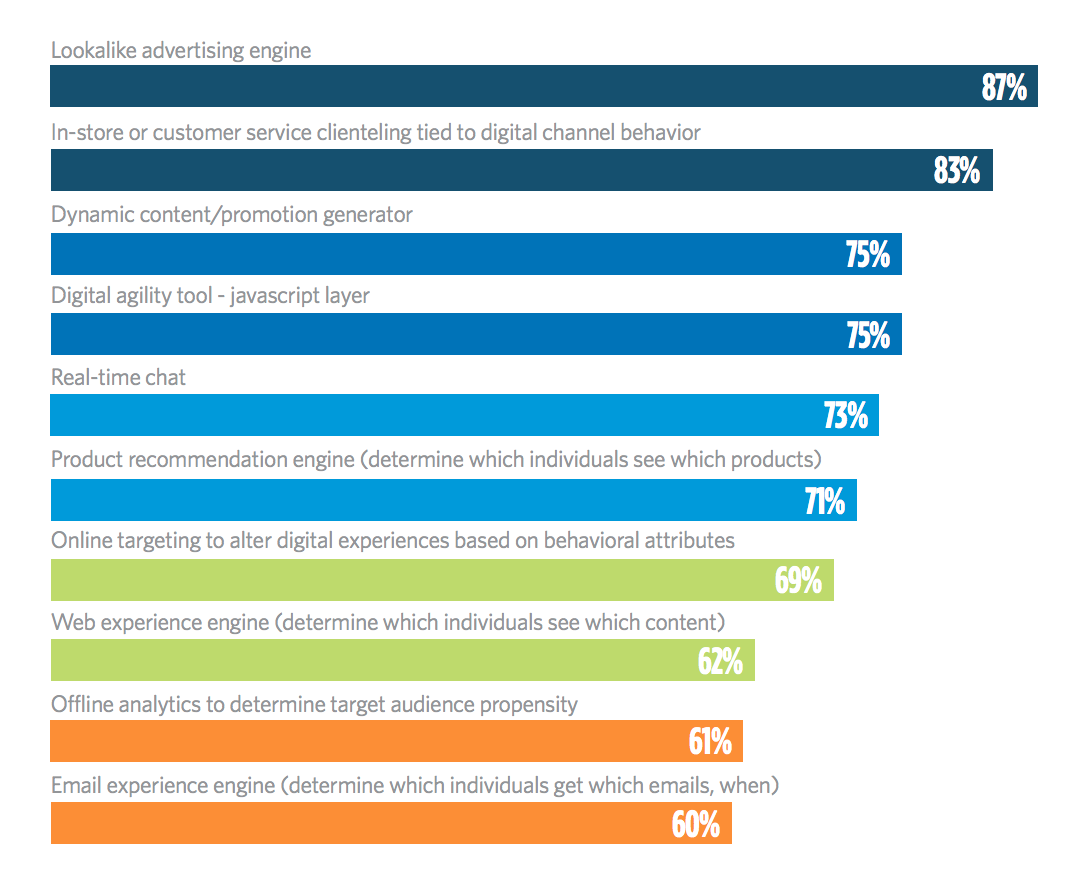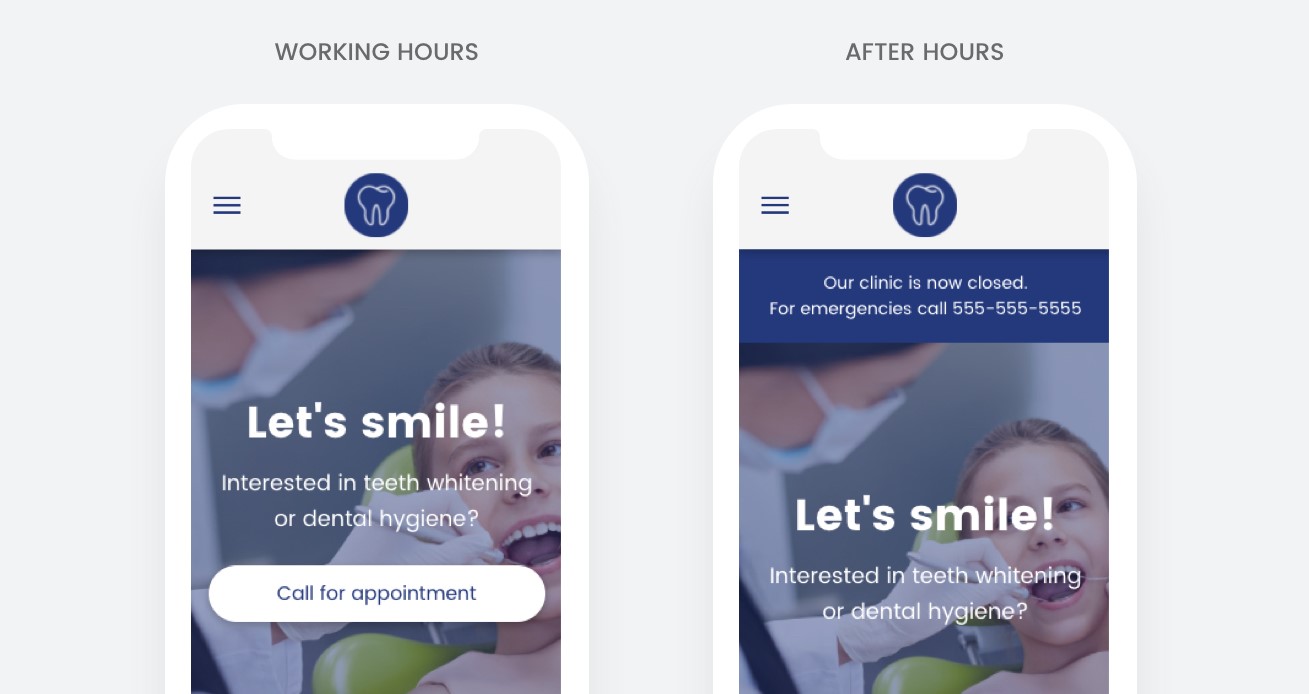What is Dynamic Content?
Dynamic online content adapts or changes based on a user's past behavior, preferences they have set, in-session behavior, or data known about the user.
Typically, the content is generated when the user clicks on a page; where they clicked from (email, PPC ad, etc.) can change the content that is generated.
How Dynamic Content Works
Let's look at YouTube. When you log in to YouTube.com, they try to give you videos they think you will be interested in (based on past in-session behavior), along with videos that are doing well at the time. You can see in the screenshot below that they are even showing and upcoming/scheduled event they think I will enjoy.

Why Dynamic Content is Important
Improving your company’s “customer experience,” or CX, is a critical part of keeping people happy with your brand, and we all know customer retention is a large part of business success.
Often, businesses focus more on their efforts of customer acquisition than retention, and while that is not a bad thing, it is more expensive to obtain new customers than it is to keep existing ones coming back for more.
Today’s consumers, particularly Millennials and Gen Z-ers, are changing their buying habits according to the experiences they have with companies. They need more attention, more personalization, and more positive moments.
That is asking a lot, and many businesses just don’t know how to achieve it. Using dynamic content personalization is one of the best ways to start.

Image source
A majority of those polled for Evergage’s 2018 Trends in Personalization report indicated that their personalization programs are yielding better onsite engagement, better CX ratings, and better sales conversions.
Below is a step-by-step process for marketers interested in experimenting with personalization.
Dynamic Content Strategies: Understand Your Customers
Long gone are the days where your marketing department could use a one-size-fits-all approach to target and convert customers. All customers are different, and the better you know them, the better you can serve them.
By taking the time to get to know the customer and collect the necessary information you need to further personalize their experience, you are moving closer to faster conversion, which shortens your sales cycle.
Collecting Customer Data
You can use a variety of data sources to learn more about who your customers are, from your website analytics to your customer relationship management software, to social media interactions, feedback surveys, and more.
An average of 47% of people are willing to provide personal information in exchange for improved customer experience, even amid today’s heightened awareness of privacy concerns.
Using the Data
Getting the information isn’t the hard part; the real challenge is making sure you know what to do with it. There are many tools that help marketing teams of any size experiment with surfacing customer profile-specific content in your off-site promotions.
If you are using the BigCommerce platform, for example, you might want to try their direct integration with Facebook Dynamic Ads, which allows sellers to automate the personalization of retargeted ad creative according to store browsing history.

Image source
Just make sure that you primarily think about the entire experience as a whole – and know that there will likely be multiple interactions with your brand before there is a purchase made.
Content Goals
Your goal is to keep the entire experience pleasant, regardless of how many visits or interactions a person has with your brand. One bad interaction could disrupt the entire experience and ruin your chances at conversion.

Image source
Using your Multi-Channel Funnels and Top Conversion Paths reports in Google Analytics can go a long way towards identifying the touchpoints and specific assets that have the most to gain from personalization.
Designing the experience as a whole, and then breaking it down into several smaller channel-specific experiences can help you ensure your customers get a positive experience through each stage of their journey.
How Dynamic Content is Different From Web Personalization
Dynamic content is content that changes based on customer segmentation and other database-driven signals that inform rule-based triggers. You can use it in various places throughout your marketing campaigns, including email, Facebook ads, and even on-site content.
Basically, it is content that changes based on some variable, such as gender, other demographic data, preferences, or purchase history.
One of the easiest examples of dynamic content can be seen with services such as Netflix and Hulu. You are served with a number of recommendations for what to watch next, based on what you have previously watched.
Those are dynamically served and will change based on your customer profile. Even the thumbnail images used to promote the same programs will vary, depending on who is browsing.

Image source
This is the same type of strategy that you can use with your on-site promotions, driving the right eyes to the right mid-funnel content experiences and product listings.
If you are on WordPress, for example, you can use the Content Aware Sidebars plugin to establish rules that show different widgets to different audience members, based on the pages they are visiting, content categories, and even date ranges.

Image source
Before segmentation made it possible to send varied messaging to different people, results were rather spotty. Think about the implications for your email marketing efforts; if you send the same email to everyone on your list, it is really only going to resonate with a small percentage of your audience, and you will end up with hit or miss results. On-site content is the same.
According to research from the Aberdeen Group, personalized marketing emails increase click-through rate by 14% and conversion rates by 10%.
Personalization Is the Final Step for Dynamic Content
If everyone clicks on your dynamic promotion creative and ends up on the same generic website, that is where disappointment occurs. On-site content personalization helps you seal the deal.
Web personalization changes a website’s presentation in real-time, based on user preferences and past interactions. Hands down, the best example of this, the one that everyone cites over and over, is Amazon.

Every customer has a personalized homepage based on their previous shopping experiences and browsing history. Those who visit Amazon from different countries get product information presented in their native language and currency, automatically.
That is how you should aim to present your content, too. Recent data from Monetate shows that marketers engaged in personalization today are doing so across communication channels and message formats. The most popular manifestations involve ads and customer service, but over half of the ten most popular involve on-site content personalization of some kind or another.

Image source
Agency Recommendations
If you are at a digital agency, unleashing the conversion boost of personalization upon your clients’ websites can be a major market differentiator.
Use a development platform that provides a rule-based personalization engine that renders different calls-to-action, widgets, and other conversion-oriented design elements to different site visitors depending on their location, device, the number of visits, campaign tags in URLs, or time of day.

Image source
With your off-site and on-site marketing efforts working in concert, dynamic content, and web personalization work together to develop those stellar customer experiences that people crave.
What You Need to Get the Job Done
Segmentation and Platforms
Let’s assume you have already done the heavy lifting of segmenting your audience, and you know who needs what kind of content to nudge them to conversion. Ultimately, you need software that facilitates that content personalization, so that no two visitors see the same content – that is, unless they by some chance, are similar enough in terms of their preferences and usage.
When choosing the right platform for your business, think about how you can segment your customers, and think as far outside of the box as you can, because the more segmented, the more personalized the experience you can create. Think about how easy it is to use the platform, and whether it is possible to use third-party data in addition to the data you collect yourself.
Once you have your customers properly segmented, which, of course, depends on the nature of your business and the products or services you sell, you should be able to create a personalized experience for everyone, regardless of the segment they fall into. Along with great service, personalization is a significant component of truly killer CX.
Innovative SEO services
SEO is a patience game; no secret there. We`ll work with you to develop a Search strategy focused on producing increased traffic rankings in as early as 3-months.
A proven Allinclusive. SEO services for measuring, executing, and optimizing for Search Engine success. We say what we do and do what we say.
Our company as Semrush Agency Partner has designed a search engine optimization service that is both ethical and result-driven. We use the latest tools, strategies, and trends to help you move up in the search engines for the right keywords to get noticed by the right audience.
Today, you can schedule a Discovery call with us about your company needs.
Source:





